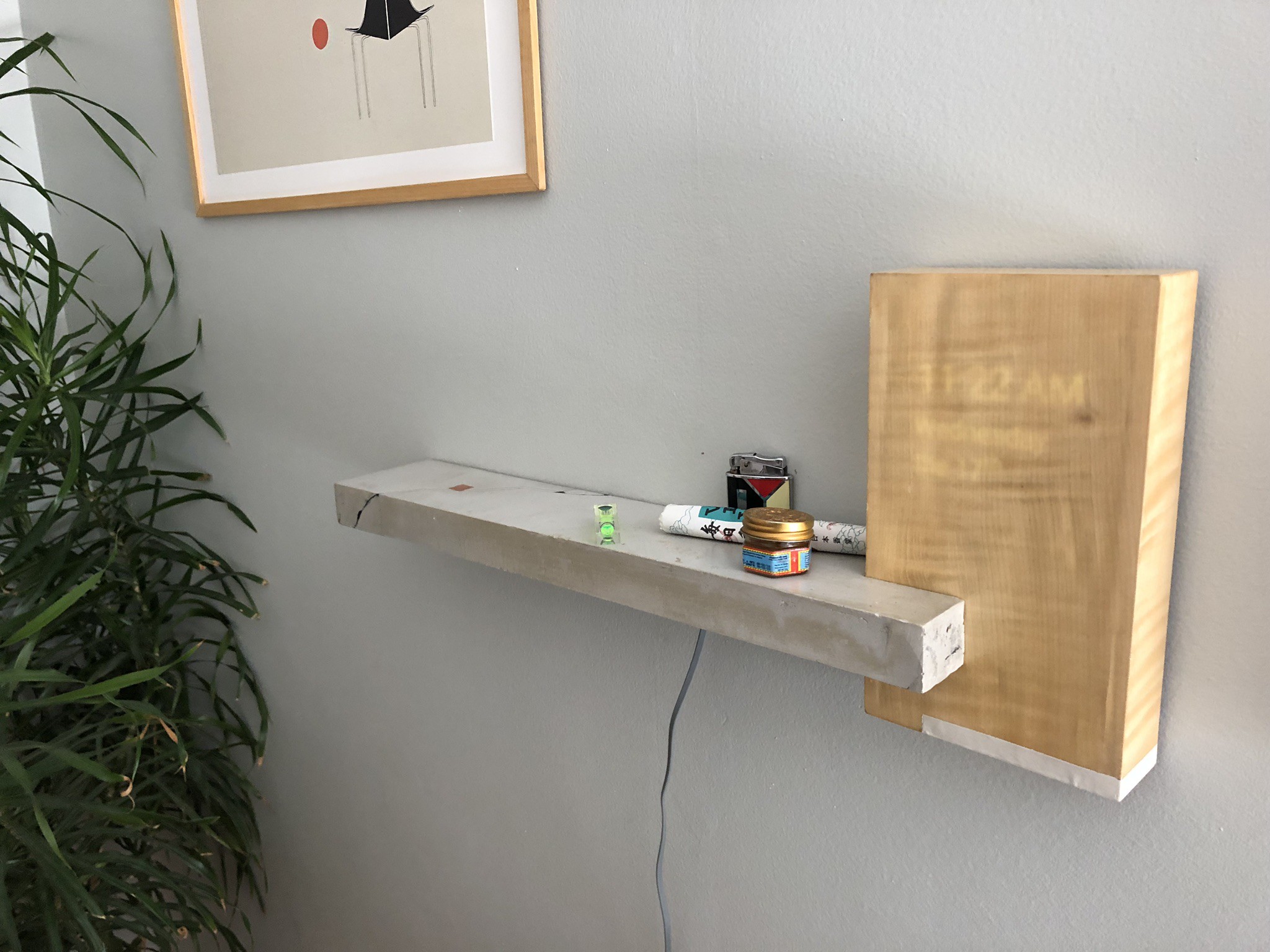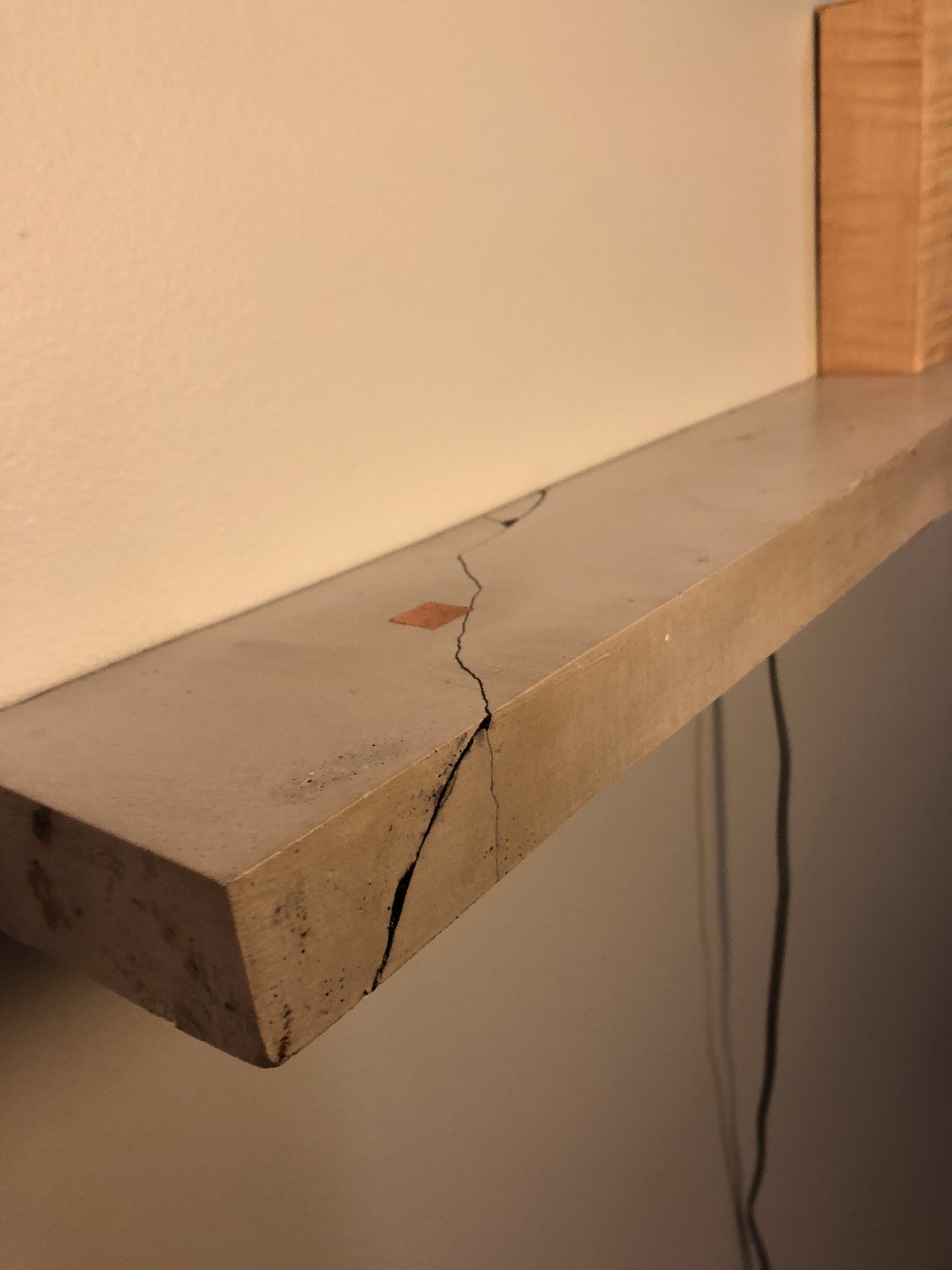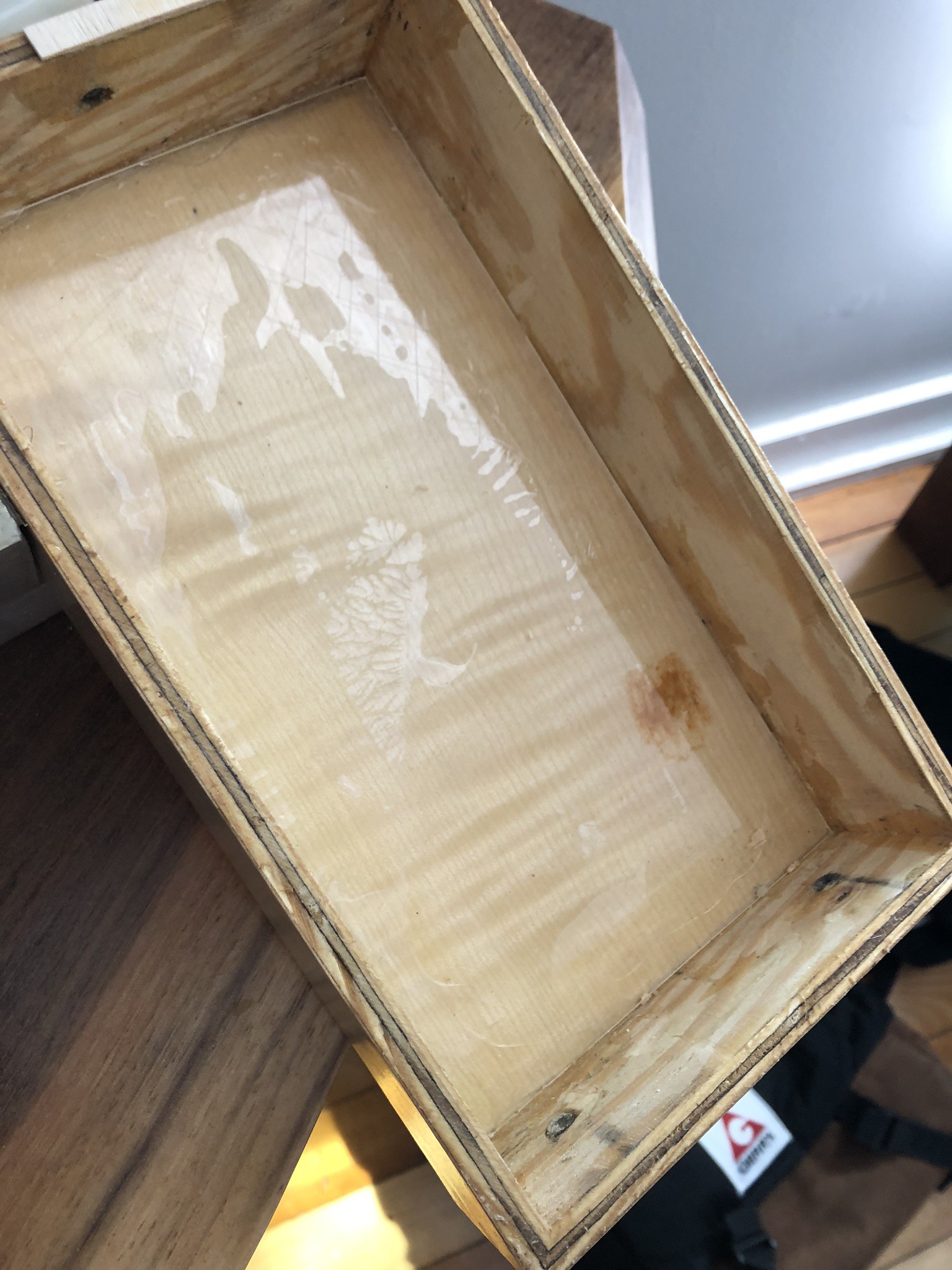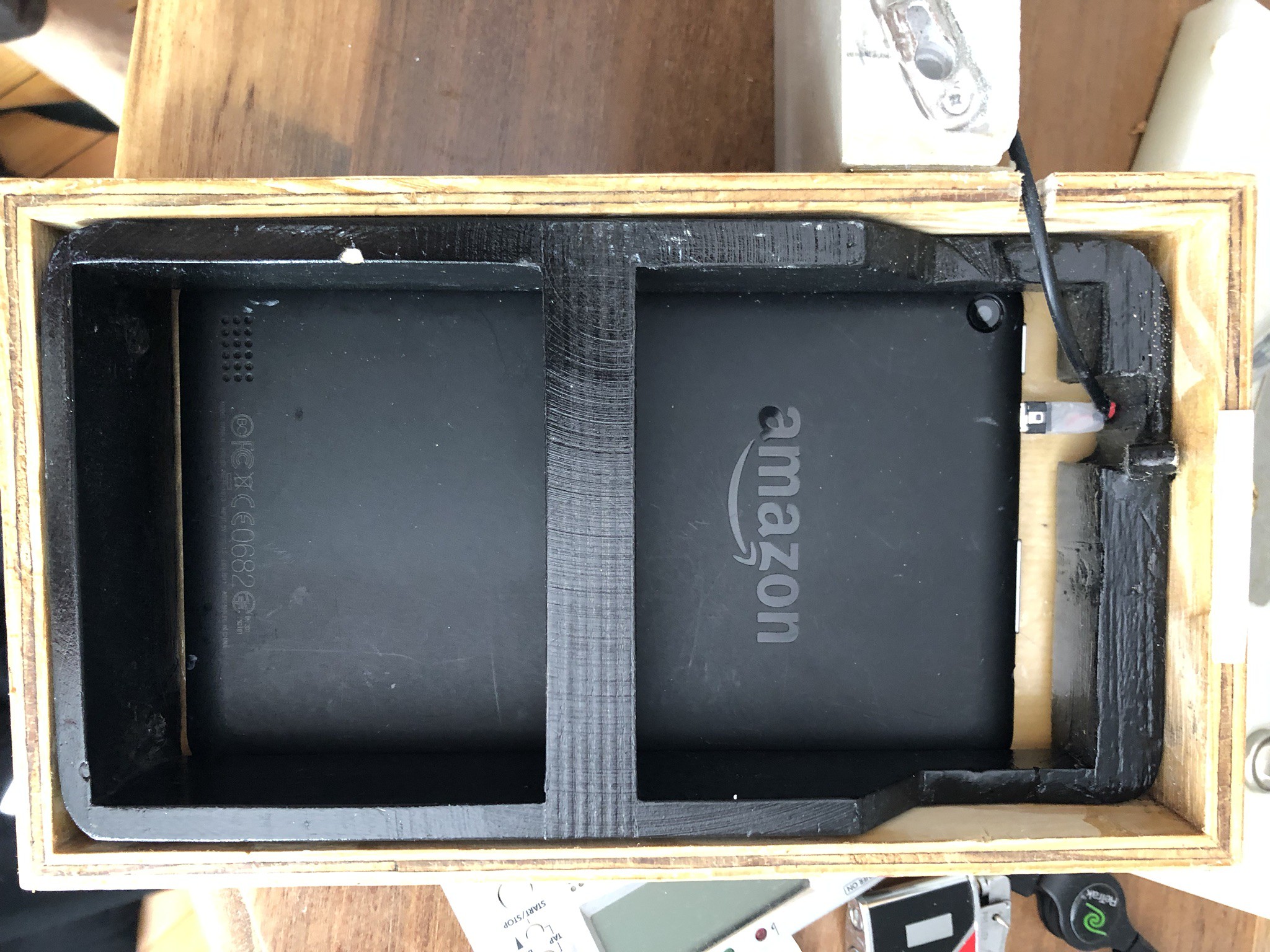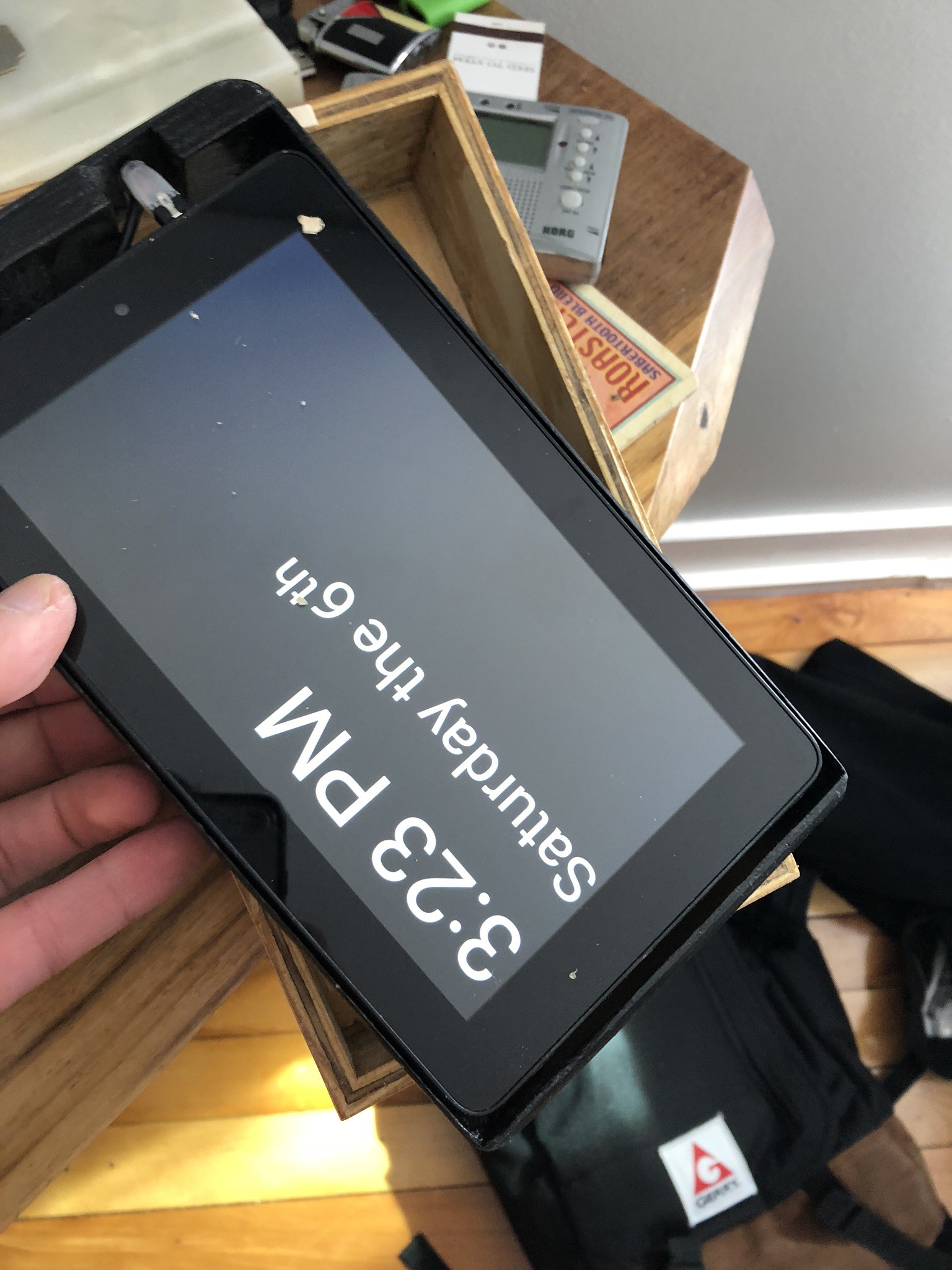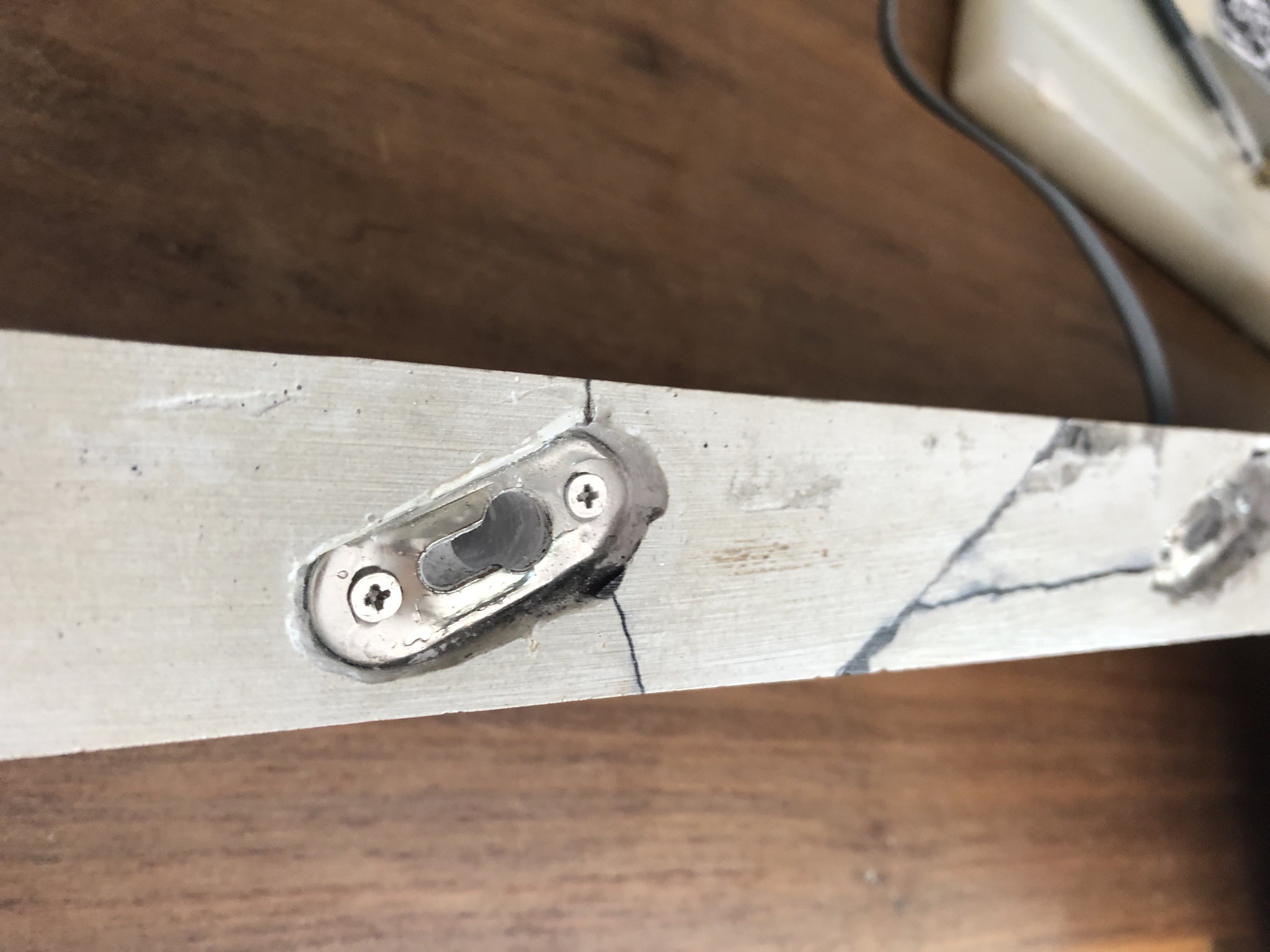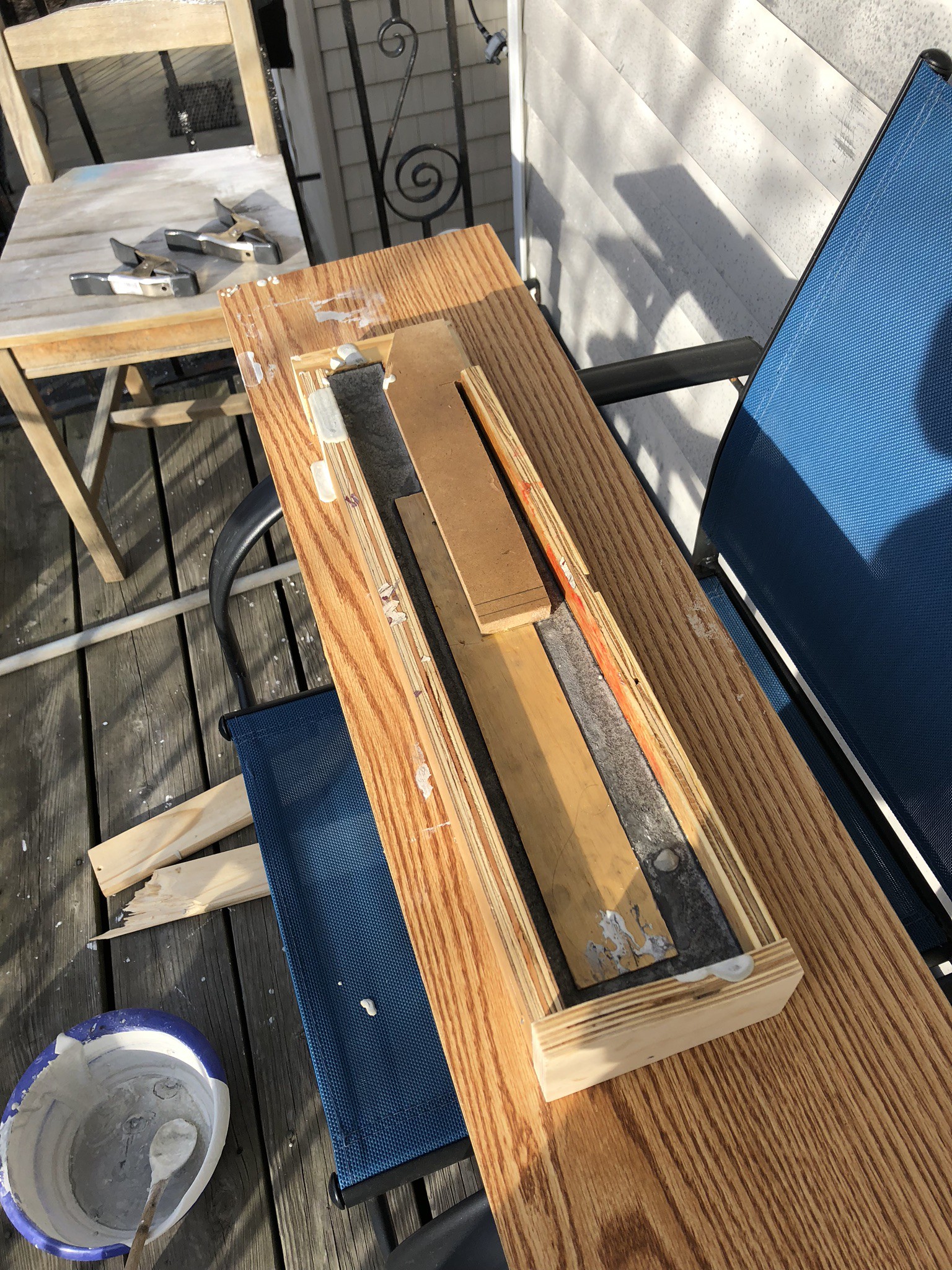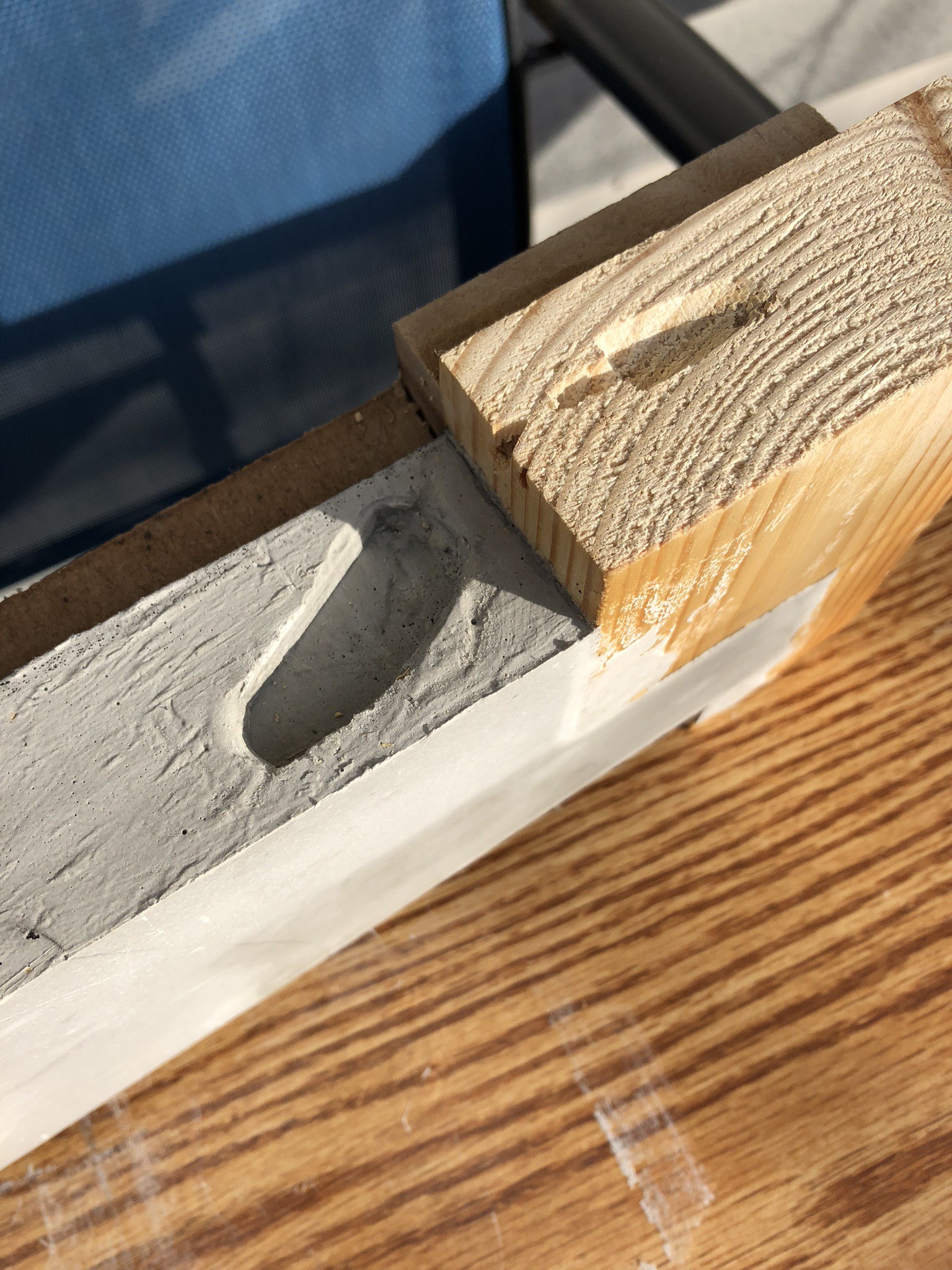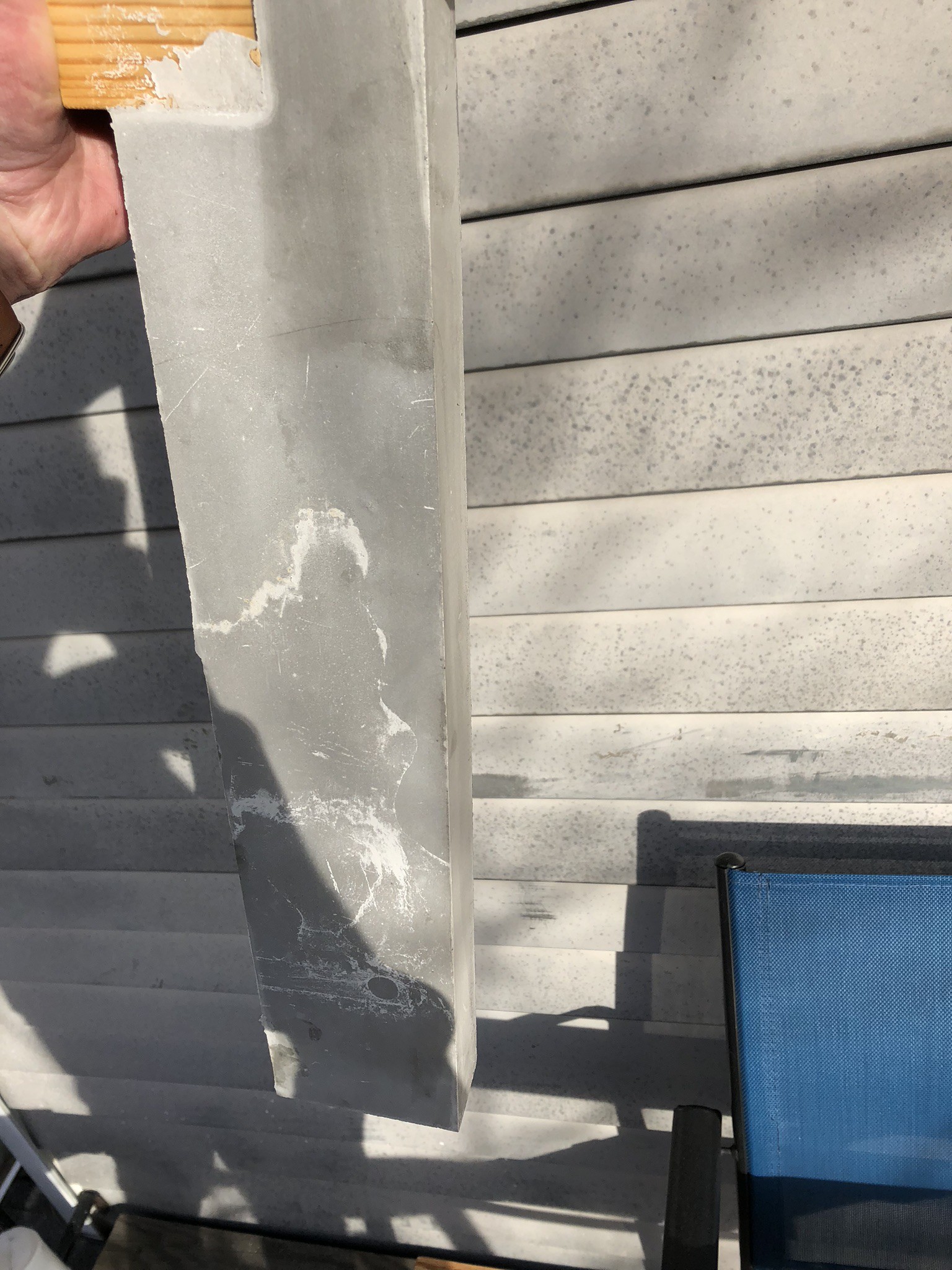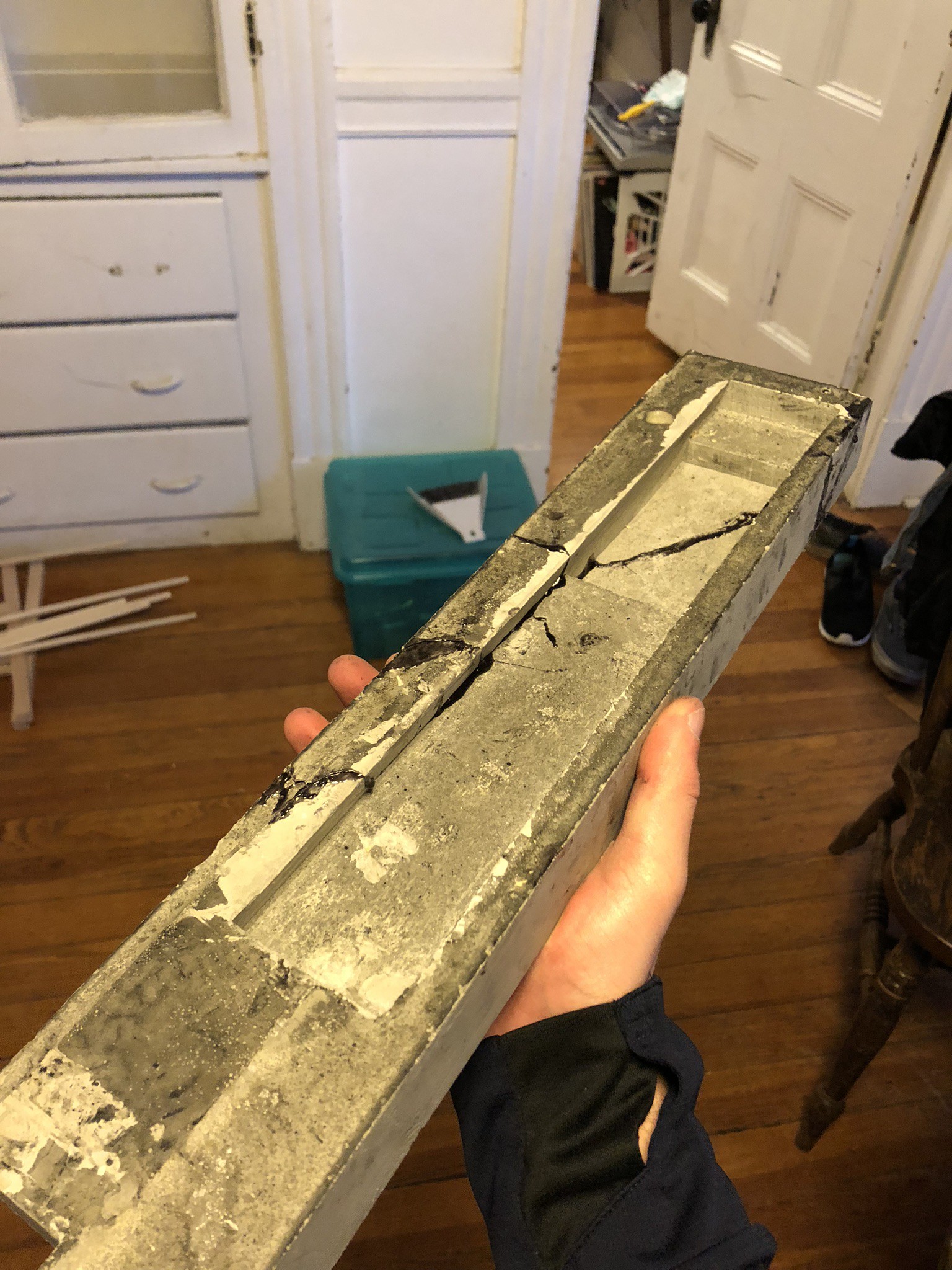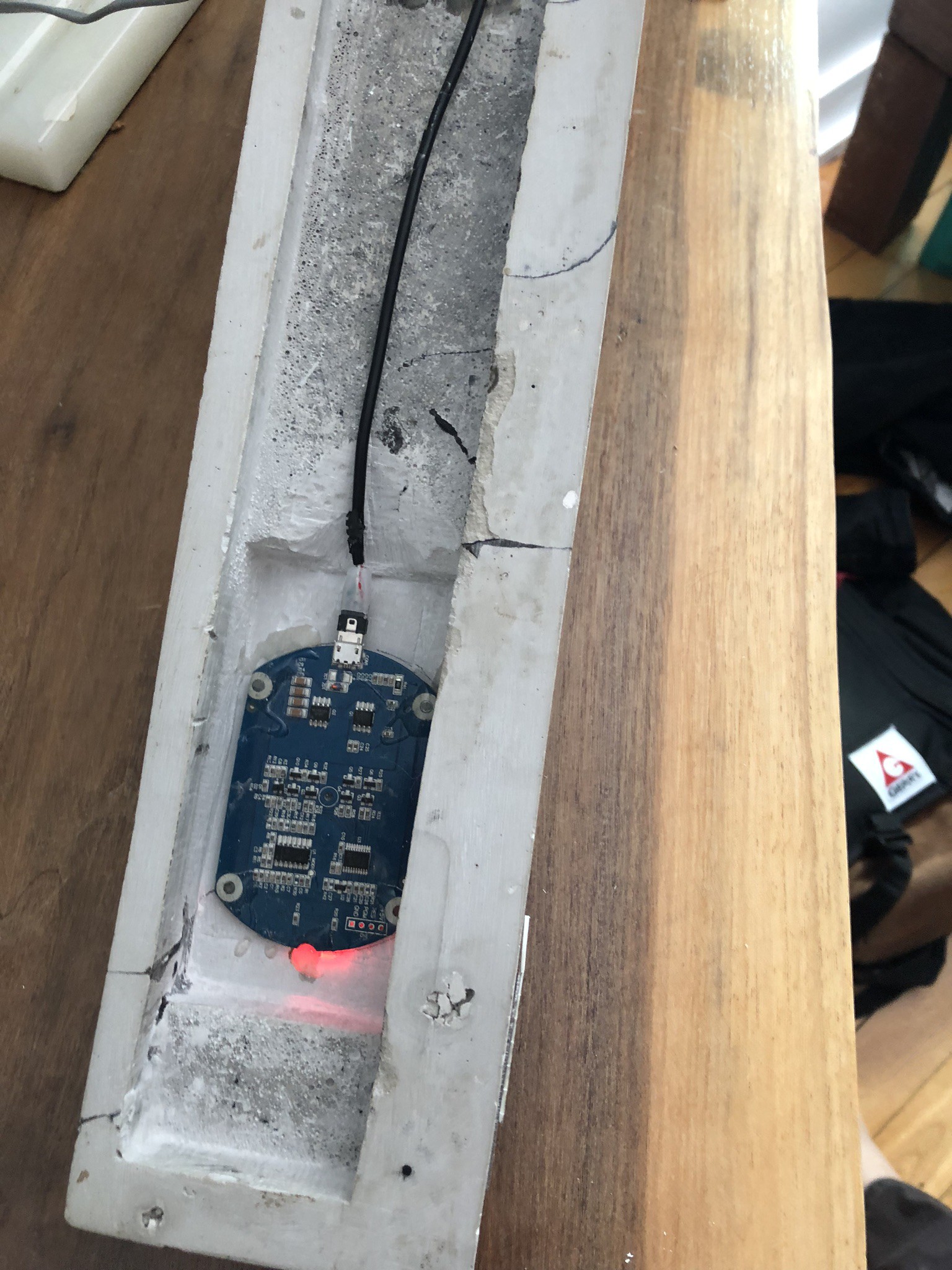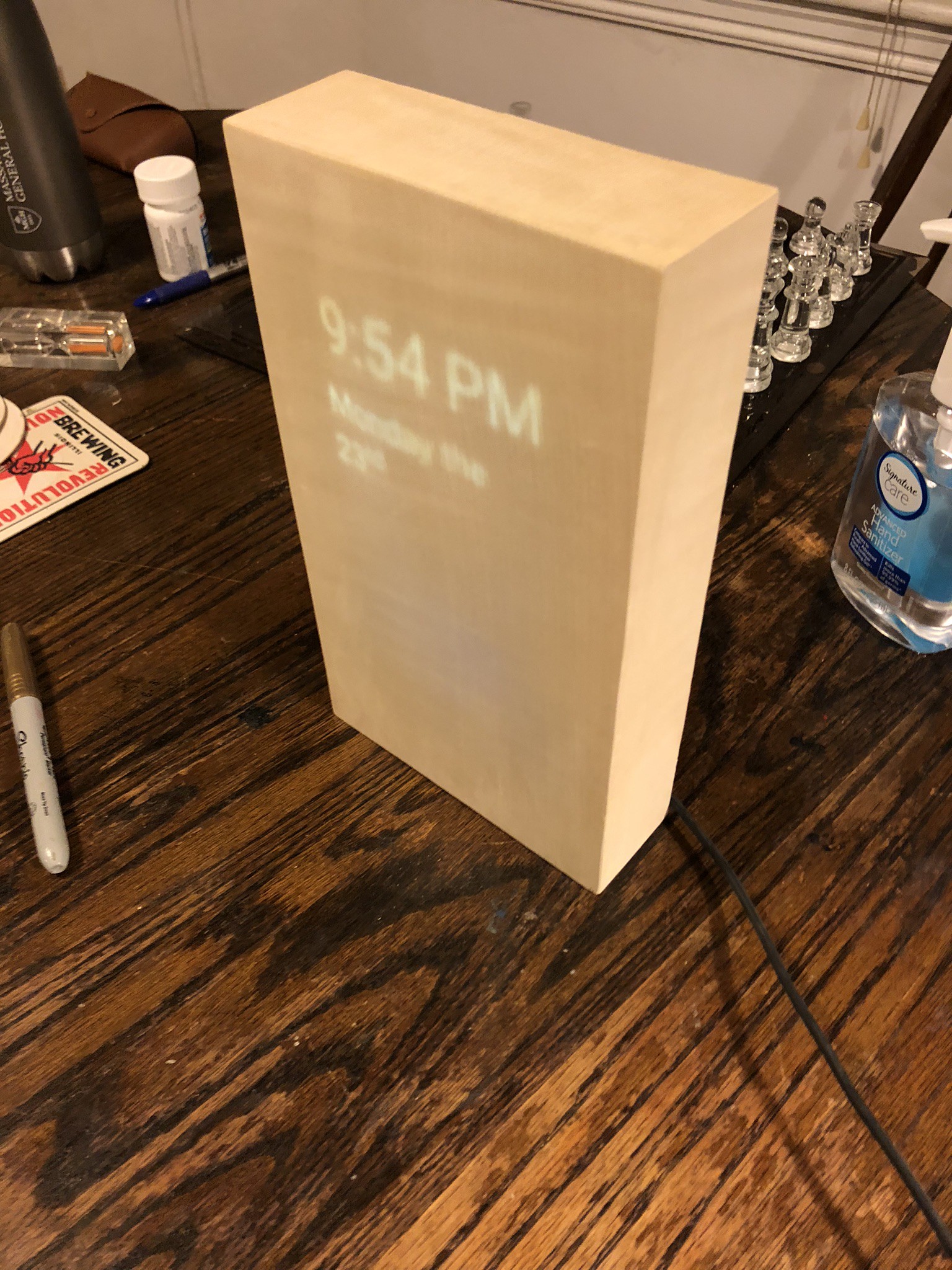-
Whats next?
05/01/2019 at 21:25 • 0 commentsI'm pretty happy with my prototype so far; it's turned out to be extremely usable and a nice piece of decoration as well. I think I'll look into ways of making it easier to produce next. I'm planning on mocking up some 3d models of the carriage that hold the tablet and see if I can make one on a 3d printer.
I also want to experiment with the interface. It's capable of touch control, but I haven't really taken advantage of that yet. I'm a crappy coder, but hopefully over the next few months I can teach myself enough to add some features, like switching between a clock and a calendar function, or dismissing an alarm. Some kind of google home or alexa integration seems like a logical future goal as well, but I'm gonna take this a one step at a time. -
Proof of life
04/17/2019 at 23:08 • 0 commentsPut it all together and hung it on a stud with a big-ass deck screw. Fun surprise, the touchscreen actually works through the veneer! I'll have to explore the possibilities in future versions. The cable management underneath is kinda a mess, but from unless you go underneath it it's not visible
![]()
![]()
-
make it pretty
04/14/2019 at 23:07 • 0 commentsI finished the concrete slab with a fine grit sand and a light matte clear coat finish. I also put a copper leaf marker on the surface where the charging pad is hidden; it's pretty hard to line it up right without it
I wiped the block with danish oil and finished it with shellac. I put a little color tag thing on the bottom right corner- it started as a way to cover up a little crack in the veneer, but I actually thought it looked pretty good and stretched it halfway around the block
-
Display Improvements and hardware
04/11/2019 at 19:45 • 0 commentsI cut a thin plexiglass panel and attached it behind the front veneer with some clear epoxy. By clamping the surfaces together I was able to stop the front veneer from warping, but I definitely lost some definition and brightness from the display. In a future version I'd like to experiment with other methods of stabilizing the veneer.
I also installed magnets on the inside of the box; these matched opposite polarity magnets on a wooden construction that holds the tablet in the right position against the front panel. This way the display is exactly where I want it, it's easy to remove if I need access to the tablet, and it snaps back in.
I also epoxied some picture hanging hardware into the slots I made on the back of the concrete cast; they're sized to fit a normal screw head so the shelf can hang with a few screws and a wall stud.
-
Concrete cast and Qi charging
04/08/2019 at 03:56 • 0 commentsThe concrete shape I need was tricky to make; it needed to look clean and smooth on top of the shelf, but hollow underneath to accommodate a wireless charger and manage the cables. I used an instant concrete mix called Quikrete, and made a lubricated plywood mold. I suspended a block into the mold to create a cavity, and used wood biscuits to create openings for hanging hardware.
I got the cast out of the mold pretty cleanly, but it cracked in half when I took out the space to make the cavity. There's definitely a way to make an intact cast, but I decided to repair the original with black dyed epoxy. I actually like the marbled look.
I picked up a cheap Qi wireless charger and ripped out the board. A few dots of epoxy fixed it inside the shelf. I couldn't find a standalone circuit to buy, but I sure there are some wholesale options like Alibaba. The one I got charges very fast through about 0.5 cm of concrete; I use an iPhone 8 with a thick plastic case and can get from 20% to full charge in about an hour.
-
Display tinkering
04/03/2019 at 18:45 • 0 commentsI'm a woodworker primarily, so I decided to start with what I know best. Last summer I built a 4-sided plywood box and fixed some curly maple veneer to the sides. The surface was especially tricky. I tried to stretch the veneer over the front like a drum initially, which worked well at first. The plan is to use a rooted amazon fire tablet to start; I downloaded a magic mirror app to test the concept. The display at maximum brightness shone through clearly, and the only times I couldn't see the letters was in direct sunlight.
After shoving the tablet in and out a few times the veneer cracked, and a couple days later I noticed the wood start to stretch and warp in the humidity.![]()
I'm also not a huge fan of the way you can see the backlight shining through the edges where the text isn't. A dot matrix display would probably better, but I definitely don't have the arduino and programming chops to do that yet.
Analog Smart Shelf
A sleek and minimalist wall-mounted shelf with hidden wireless charger and customizable wooden display
 Jake P
Jake P